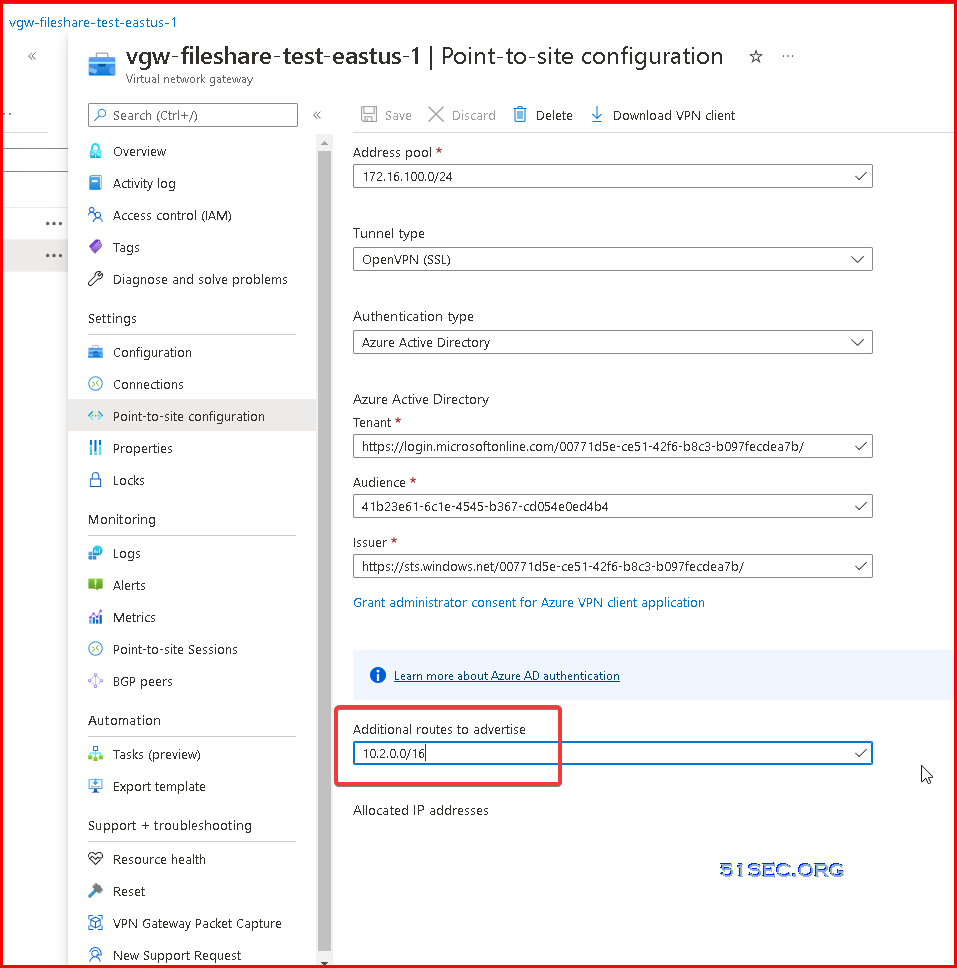This post summarize the configuration for allowing Point-2-site vpn users to access your remote peering network.
Related Post::
Diagram
Steps to Configure Peering
The following steps assume you have configured both resource groups in different Azure regions, both virtual networks and one Point-2-site virtual network gateway. Your remote users are able to use this p2s gateway to access the resources in one region (one resource group).
1 Go to your Azure virtual network, choose Peerings from left panel
2 Click add button
3 Enter local peering link name and remote peering link name. Azure will create two links for you in this one time setup.
4 Choose remote virtual network name
Once you completed peering, the VMs can talk each other in those two virtual networks (10.1.0.0/16 and 10.2.0.0/16) without further configuration.
Configure Peering Links
1 Add a route for peering network into Virtual Network Gateway Configuration
2 Change Peering configuration on local
This will allow P2S users to access your remote peering network.
Explanation for Virtual network gateway or Route server:
Dynamic routes for virtual machines in a virtual network are programmed by virtual network gateways or Route Servers. Additionally, a virtual network gateway routes traffic between on-premises networks and Azure virtual networks. A virtual network gateway can be created for either VPN Gateway or ExpressRoute.
3 Change Peering configuration on remote
After above steps, your P2S users should be able to access remote site’s network.






